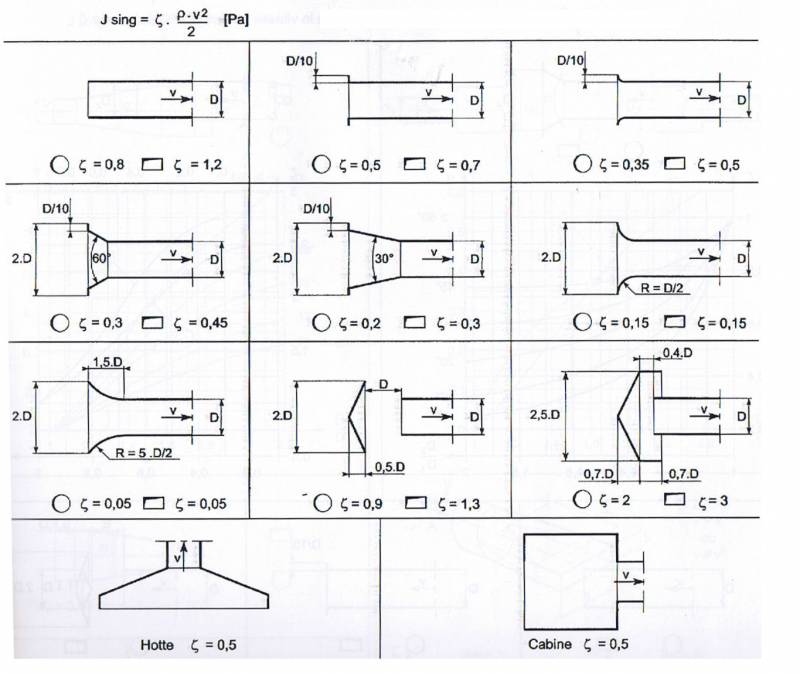User Tools
Site Tools
Site Tools
Table of Contents
Theory behind datacenter infrastructure
This page regroups basic theory for datacenter cooling management. No need to go too far in equations.
Thermal exchanges
Liquid-Liquid
Liquid-Gas
Hydraulic
Liquids
Table
| Name | Formulea | Boiling point (1 atm) | Freezing point (1 atm) | viscosity (20°c) | density (20°c) | specific heat |
|---|---|---|---|---|---|---|
| Water (liquid) | H2O | 100°C | 0°C | 8.90 × 10−4 Pa·s (25°C) | 999.97 kg/m³ | |
| Ethylene Glycol | C2H6O2 | 197.3 °C | -12.9°C | 1.11 g/cm³ | ||
| Diethylene Glycol | 244.8 °C | -10.5°C | 1.1184 | |||
| Triethylene Glycol | 287.4 °C | -7.2°C | 1.1254 | |||
| Propylene glycol | C3H8O2 | 188.2°C | -59°C | 1.04 g/cm³ |
Glycols
All glycols produce acids in the presence of air (oxidants). The acids can reduce pH and cause corrosion. When the system pH drops below 7, rust will form on any ferrous metal, and non-ferrous metals start to corrode. Even a small amount of glycols in a circuit open to air can start corrosion ! Beware when connecting new equipments.
http://www.veoliawaterstna.com/crownsolutions/ressources/documents/2/21823,Glycol.pdf
Freezing Point of Propylene Glycol based Water Solutions
| (%) by mass | 0 | 10 | 20 | 30 | 40 | 50 | 60 |
|---|---|---|---|---|---|---|---|
| Temperature °C | 0 | -3 | -8 | -14 | -22 | -34 | -48 |
Gas
Bernoulli
For liquids and low mach gas flows, it is possible to assume fluids to be incompressible, and use Bernoulli principle :
<m 18>{v^2/{2g}}+z+{p/{rho g}}=constant</m>
With :
- <m 18>v</m> the fluid flow speed at a point on a streamline,
- <m 18>g</m> the value of acceleration due to gravity,
- <m 18>z</m> the elevation of the point above a reference plane, with the positive z-direction pointing upward – so in the direction opposite to the gravitational acceleration,
- <m 18>p</m> the pressure at the chosen point, and
- <m 18>rho</m> the density of the fluid at all points in the fluid.
Between two points (1 and 2) of a flow (in a pipe for example), it is possible to assume with no pressure losses :
<m 18>2g+z_1+{p_1/{rho g}}=2g+z_2+{p_2/{rho g}}</m>
Now considering pressure losses :
<m 18>2g+z_1+{p_1/{rho g}} + H_1 =2g+z_2+{p_2/{rho g}} + H_2</m>
Pressure losses
There are two types of pressure losses :
- linear losses, friction of fluids along a pipe or a surface on a defined length
- singular losses, due to singular flow perturbation, for example a bent pipe or an exhaust.
Of course, losses are logical : curved shapes generates less losses than angular shapes. Same with pipes, the bigger the pipe, the less losses. A good example is the following table, providing coefficients for singular losses, have a look on differences between shapes :
 (from http://www.mecaflux.fr/perte%20charge%20singuliere.html)
(from http://www.mecaflux.fr/perte%20charge%20singuliere.html)
Wet air
Computer Room
Floor tiles
Tiles come curved, and when in place gradually become flatter. This provides stability to the floor. This is why you should be careful when removing tiles.
Mass is applying as following :
If you want to remove another tile, you should not remove a tile in the same column or in the same line, as it may cause tiles movements and permanent disharmony :


